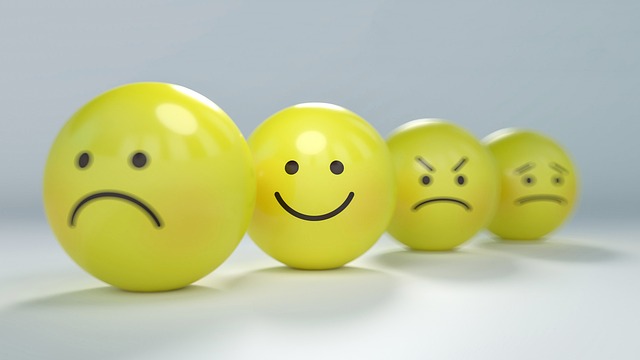The Story of the Emoji

You probably sent an emoji to someone while on your computer or smartphone today without giving it much thought. That's because emojis and emoticons have come a long way from being a hidden feature in messaging apps to a normal part of how we interact with others. They now offer more detail and the opportunity to express yourself in shorter, often more specific, and humorous ways. We'll explore the history of the emoji and the impact of these unique icons on popular culture.
The Beginning of Emojis
There was a time when you couldn't pick from a curated list of tiny graphics to express how you feel about something. For those of us who wanted to send a wink or smile, we had to make do with carefully and creatively combining characters from our keyboards. Establishing a timeline for when Internet users began using parentheses and symbols to create faces remains a challenge, but we know much more about the apps and graphic designers that made more detailed emojis available for today's communications devices.
The Birth of Modern Emojis
Emojis, as we know them, were introduced in 1997 with the launch of the SkyWalker DP-211SW mobile phone. The phone came with 90 unique emojis, many related to time and clocks, and a few that were thumbs up, hearts, and other emotions.
A couple of years later, designer Shigetaka Kurita began expanding the library of emojis to 176 for a new mobile phone service from NTT DoCoMo called “i-mode.” The service limited users to messages of 250 characters or less, so Kurita developed more emojis to help keep messages shorter. Other emoji sets were created before Kurita's, but considering the service had 25 million users in 1999, none were as notable as this one.
Emojis became more animated with a new release of MSN Messenger 6 circa 2003. While the selection of emojis wasn't too large at first, with only 30, the collection included moving emojis and allowed users to make and upload their own icons to the service.
Mobile Emojis
Smartphone manufacturers had some tricks waiting for users when texting became more popular. Apple pushed emojis to further prominence when it hid an emoji keyboard on Japanese iPhones in 2007. Savvy users found the keyboard and began using it extensively. Eventually, the Unicode Consortium, the fancy name for the organization that standardizes how text is shared across the Internet, jumped in and ensured that more devices recognized emojis as a method of communication.
Nowadays, you'll see emojis within many apps and much more common emoji keyboards on your Apple or Android phone. Emojis are a common language now, and emojis require their own encyclopedia and dictionary to help you decipher their purpose — though, to be fair, some emojis don't have a specific meaning.
Even the rather professional Microsoft Outlook includes emoji options, and you can make a thumbs-up and many other symbols stream across the screen while on a Zoom call or Google Meets video chat. Emojis are everywhere!
Emojis in Popular Culture
Emojis have found their way into popular culture. The universal icons are frequently found in many advertisements as a colorful and familiar attention getter. You may even find them designed into the gameplay and a variety of slot apps at your favorite online casino.
As for the word “emoji” itself, it has entered our lexicon as a commonly used word. Oxford Dictionary's word of the year for 2015 wasn't actually a word, but the emoji of a face with tears of joy. So, why did the Oxford Dictionary choose an emoji? The dictionary says the use of the word emoji has tripled in just a few years, and that specific emoji was the most sent emoji globally.
If you have seen The Emoji Movie, you know that emojis have even hit the big screen. The animated film tells the story of a young man seeking the right emoji to send to his crush. While he has his choice of a wide variety of ways to express himself, he accidentally chooses a multi-expressional that displays many different emotions. The rest of the movie follows the shifting emoji trying to define himself as an emotion while the boy at the center of the story finds a way to tell his crush how he feels.
One of the more popular emoji products might be in your place now. Smiley faces, monkeys, and of course, the ever-hilarious smiling pile of poop, complete with big, oval vertical eyes, are commonly sewn or printed into pillows and put on couches or beds.
There are now many more popular cultural references to send with emojis than ever. While not standardized across all platforms, you can get emojis of your favorite singers and celebrities, including Justin Bieber and the Kardashians, just to name a few.
Conclusion
Emojis help you express yourself across different platforms in a fun and unique way. While the idea of the emoji initially helped shorten messages across a communication service with limited capacity, emojis today are much more commonly sent to express ourselves with a bit more detail than just typing 'lol.'
- Star Symbols
- Heart and Love Symbols
- Chess & Card Symbols
- Bracket Symbols
- Currency Symbols
- Religious, Culture, Spiritual Symbols
- Copyright and Trademark Symbols
- Musical Symbols
- Degree, Weather and Unit Symbols
- Arrow Symbols
- Astrology and Zodiac Symbols
- Checkmark and Tick Symbols
- Male/Female Symbols
- Punctuation Symbols
